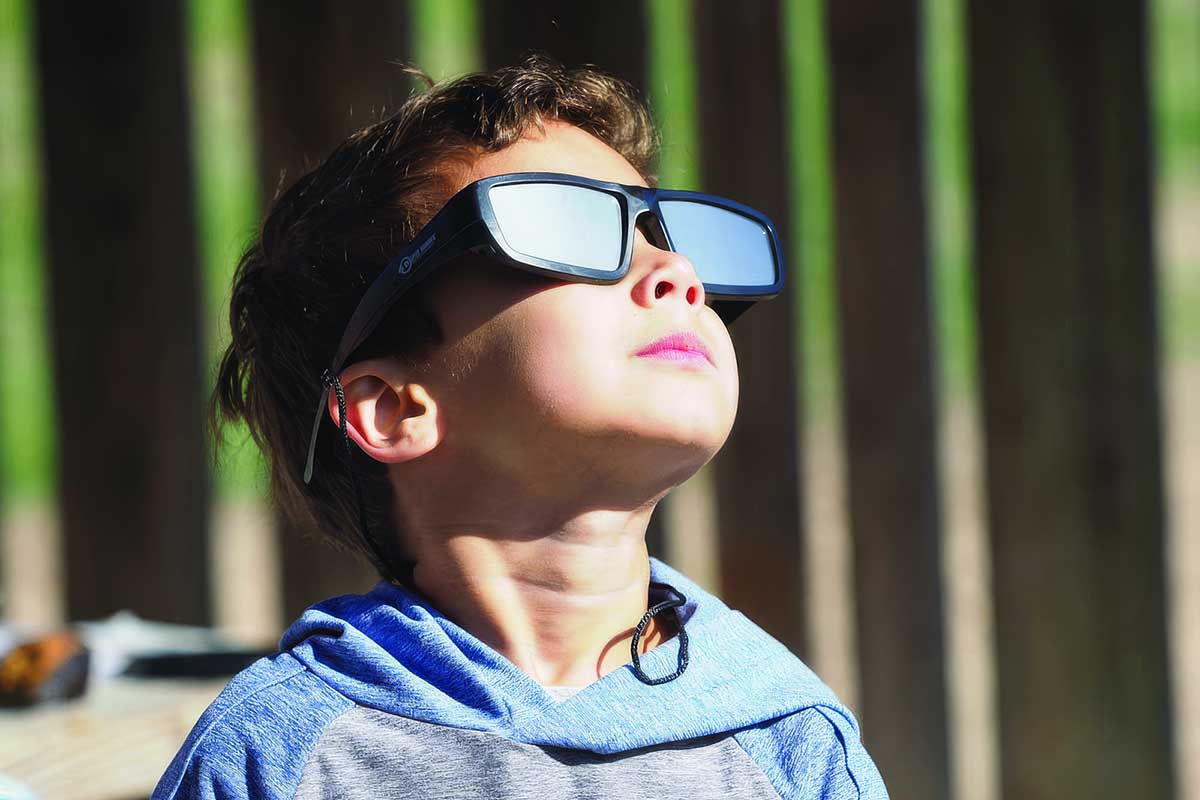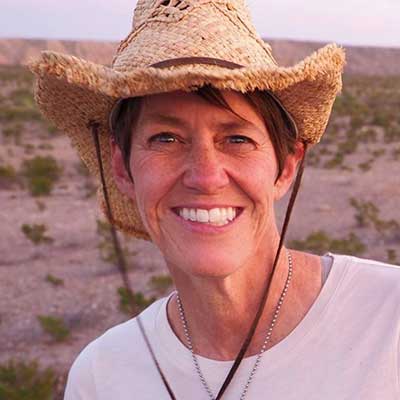Back in October when the moon passed between the Earth and the sun in a celestial display known as an annular eclipse, I headed to Lost Maples State Natural Area in the Hill Country, donned a pair of goofy cardboard glasses and gazed skyward.
The field around me bristled with telescopes and tripods, all directed at the slow-moving phenomenon, which looked to my untrained eye like a frying pan slowly moving in front of a bed of glowing coals. Just as the moon lined up with the face of the sun, creating a halo of yellow, a cheer arose, and someone cranked up Johnny Cash’s Ring of Fire.
As fun as that was, it was just the warmup for what’s coming April 8, when Texans will get front-row seats at an even more impressive spectacle—a total solar eclipse.

Maxine Margolis Smith experiences the thrill of the October 14, 2023, annular solar eclipse from near Bandera.
Erich Schlegel
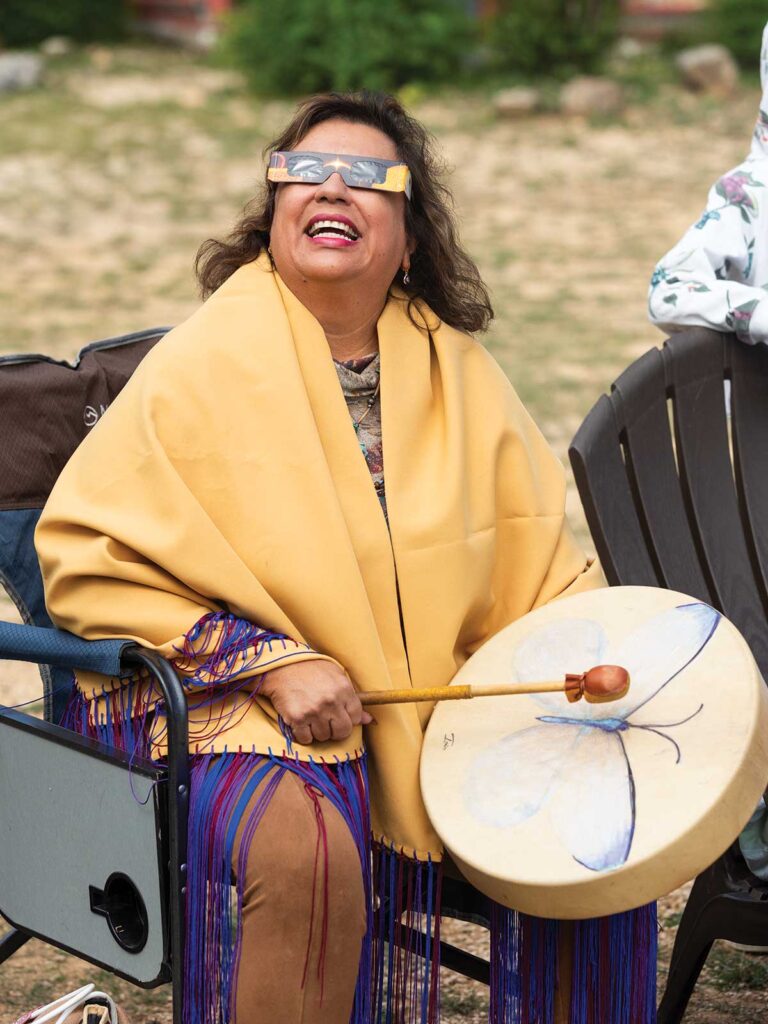
Irene Ramos participates in a spiritual drum circle near Bandera.
Erich Schlegel
The last total solar eclipse viewable from the U.S. occurred August 21, 2017—but Texas wasn’t in the path of totality. Those who peered at it (through special safety glasses, of course) from here saw the moon’s shadow creep across the sun but never fully blot it out. Other parts of the country experienced totality.
“A really good total solar eclipse is an emotional experience,” says astronomer Phil Kelton, former assistant director and superintendent of the McDonald Observatory in Fort Davis. “They’re awe-inspiring events, like nothing else in nature. The annular eclipse was a poor second.”
In April, the eclipse’s path of totality will cross Mexico, enter Texas near Eagle Pass, and slowly crawl northeast across the state. Kerrville, Bandera and Waco are all near the centerline, so watchers there will get a good show. Much of the Metroplex will experience totality, as will parts of Austin and San Antonio.
After crossing into Oklahoma and Arkansas, the eclipse will pass through 10 more states before moving out of Maine and into Canada.
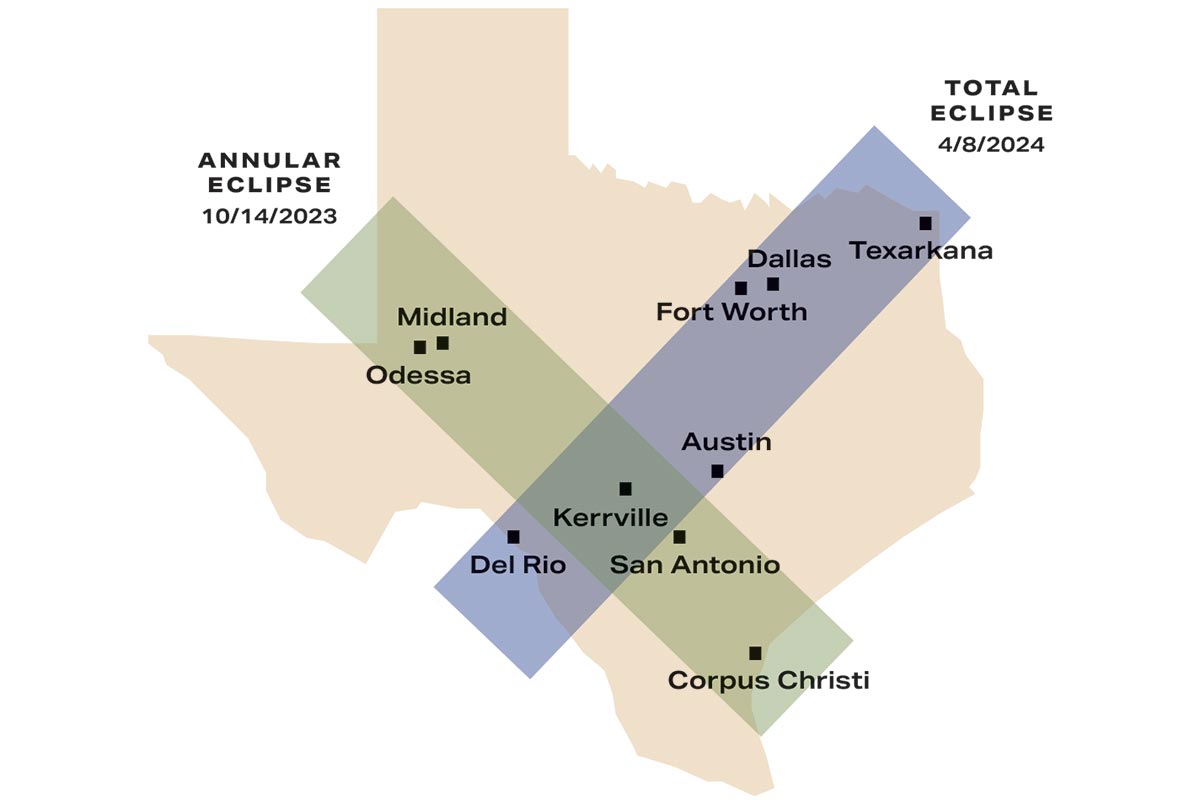
The whole event—from the time the moon first bites into the sun—will last roughly 3 hours in Texas. But the duration of totality will vary by location. In Vanderpool and Ingram, for example, it will last 4 minutes and 26 seconds; in Austin, farther from the centerline, it will last less than two minutes. The start of totality will also vary, occurring between 1:27 p.m. and 1:40 p.m. depending on where you’re viewing.
During those few minutes, skies will grow significantly darker. It’ll feel cooler, and some animals may exhibit twilight behaviors. If skies are clear—and chances of a clear sky are historically higher in Texas than they are farther north and east across the U.S. at that time of the year—bright stars will become visible.
“It’s one of the great events of nature,” Kelton says. “There’s an element of majesty and awe that occurs during a total solar eclipse. Only in the last few hundred years has man understood enough about the cosmos to appreciate what was causing it.”
Total solar eclipses occur every few years at different locations around the globe. After this year’s event, an eclipse in 2033 will impact a small part of Alaska, and one in 2044 will affect Montana and the Dakotas. The next total eclipse to carve a broad swath across the country, though, won’t take place until August 12, 2045.
Now’s the time to plan. People are traveling to Texas from all over the world for the April eclipse, and many lodges and campgrounds in the path of totality are already booked.
Don’t panic.
“The path is huge. You don’t have to be in a special place,” says Shaun Tarpley, an architect from League City who chases eclipses to photograph them. He and his wife, Ashley, an aeronautical engineer who works at NASA, traveled to Lost Maples with their son for the annular eclipse and plan to return to the Hill Country in April.
“As long as you’re in the path, you can get out on the side of a road,” he says. “If you’re in the area, you’ll be able to experience it.”
When I drove to Bandera County for the annular eclipse, I spotted fields with hand-painted “camp here” signs planted among the ash junipers and oaks.
Eclipse watchers had gathered for a celebration at Stonehenge II, a scaled-down version of the British original on the lawn outside the Hill Country Arts Foundation in Ingram. (Festivities are planned next month, too.) And at Lost Maples, campgrounds and day-use areas were packed.
Among those I met was Frederic Allegrini, an astrophysicist and amateur astrophotographer from San Antonio who drove 2,500 miles in four days to see the 2017 eclipse in Tennessee. He and his wife wanted to be in the path of totality because, as he told her, doing anything else is like being 95% in love. “It has to be 100% or nothing,” he says.
And then there was Laura Hermann of Spring, who stood at a table loaded with snacks and used a Moon Pie and a bag of Sun Chips to demonstrate how the eclipse would unfold.
For those with deep pockets, touring companies like Smithsonian Journeys offer luxurious guided tours through the Hill Country, with eclipse watching at Becker Vineyards near Stonewall and stops at other Central Texas sites.
For a less expensive experience, reserve a day pass at one of the Texas state parks in the path of totality. Enchanted Rock and Lost Maples will be popular destinations, but spots will fill up quickly. Reservations at Enchanted Rock open 8 a.m. March 11, and reservations for all other state parks open 8 a.m. March 8. Lower Colorado River Authority parks are another option, with special activities at some locations, including Black Rock Park on Lake Buchanan.
If your favorite park is booked, check out Campspot’s regularly updated guide of sites in the path that still have availability. At RVshare, you can book an RV directly from the owner.
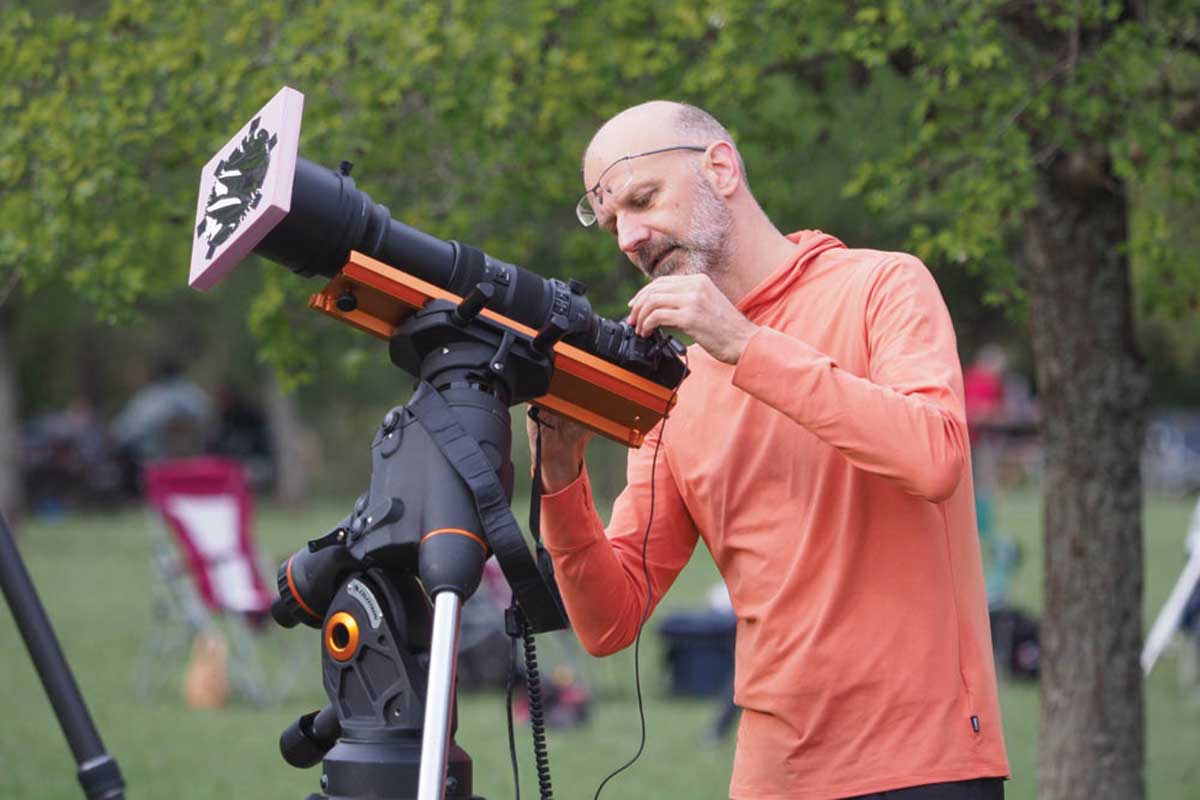
Frederic Allegrini sets up his camera gear at Lost Maples State Natural Area.
Pam LeBlanc
If you want a side of music with your eclipse, consider the family-friendly Eclipse Utopia at Four Sisters Ranch in Utopia. Camping is available, and the event includes workshops, disc golf, hiking, biking, yoga and two days of live music. Closer to Bandera, the Ground Zero MusicFest includes everything from live music and a classic car show to a cornhole tournament and space alien costume contest.
Wherever you go, arrive early, protect your eyes and embrace the experience.
That’s what Emma Ransome and Pavol Klacansky, both from Austin, did during the October eclipse. I found them stretched out in the grass at the campground at Lost Maples, listening to a special playlist they had compiled, grinning behind their eclipse glasses.
“We’ve been able to slowly watch it evolve,” Ransome says. “It’s very relaxing.”
And the opening act only got them more excited about the April main event.
For a deeper dive into the wonders of the eclipse, check out nationaleclipse.com.
